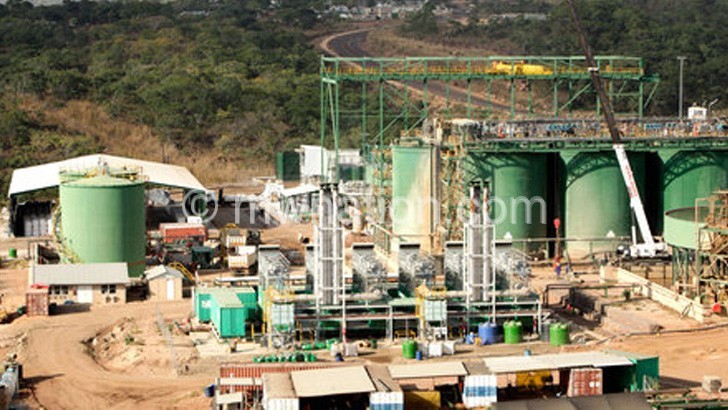Mining in Malawi still in infancy—expert
Energy and mining expert Grain Malunga has said it would be too ambitious for government to count on mining particularly coal and uranium as a revenue source in the short-term.
Malunga, who once served as Minister of Natural Resources, Energy and Mining was reacting to the recently released 2017 Annual Economic Report in which government states that revenue generated from the mining and quarrying sector is projected to register a 1.6 percent growth rate this year.

The report further says growth is expected to be sustained in 2018, projecting the sector’s growth rate at 2.3 percent.
“To pin hopes on mining could not be right. Presently, mining in Malawi is just a promising sector and we are not there yet,” he warned.
The report compiled by the Ministry of Finance, Economic Planning and Development has pinned the assumptions on coal which it says is expected to increase due to increased production of flue cured tobacco which requires coal for processing.
But Malunga says many farmers have slowed down on growing the crop.
“Many people are not into tobacco anymore following the anti-smoking lobby but also the lower prices fetched in this sector hence to pin the projections tobacco could not be right,” he added.
Government is also banking on construction of nuclear reactors in China, India, Russia and the Middle East, global demand is expected to increase and lead to a pick up in the uranium price.
Production of uranium in the country is likely to increase to meet the global demand.
Malunga said while the projected figures seem achievable, Malawi’s mining sector is still booming and coupled with flaws in the legal framework it has inadequate capacity to produce more uranium.
He urged that to pin hopes on the resumption of uranium mining should be out of the picture, saying that the country has not realised the profits from Kayelekera to the maximum as yet.
“There was one time when uranium mining at Kayelekera was at pick and though there was some meaningful contribution towards the economy, this was not the best it could do. What we should be talking about now is oil exploration and other minerals,” he said.
Malunga said players in the sector are anxiously waiting for the mining report to know what kinds of minerals are available for exploring, adding that there is also need for government to make substantial investments in the power sector as investment in the mining sector largely depends on power.
But Ministry of Natural Resources, Energy and Mining spokesperson Ayam Maeresa in an earlier Interview with Business News maintained that the nuclear reactors under construction in China, India and Middle East would turn around the sector.
The mining sector contribution to the Gross Domestic Product (GDP) has been stagnant for the past five years at 0.9 percent but the annual percentage growth rate of the same has slightly improved the past five years.
In 2014, the sector was at -4.6 percent before it grew to 1.1 percent in 2015. In 2016 the sector slumped by 0.4 percent. This year, it is expected to recover to 1.6 percent and 2.3 percent next year. n





